Formula (C2H4O)x Density 1.19 g/cm³ | Boiling point 228 °C | |
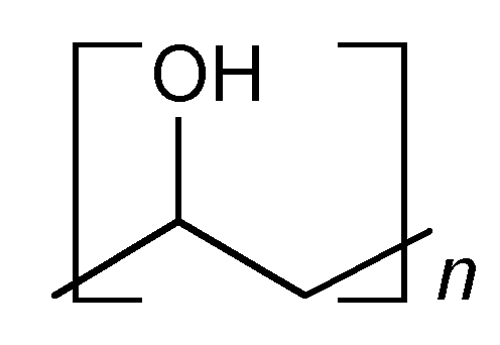 | ||
Selvol polyvinyl alcohol solution preparation guidelines
Poly(vinyl alcohol) (PVOH, PVA, or PVAl) is a water-soluble synthetic polymer. It has the idealized formula [CH2CH(OH)]n. It is used in papermaking, textiles, and a variety of coatings. It is white (colourless) and odorless. It is sometimes supplied as beads or as solutions in water.
Contents
- Selvol polyvinyl alcohol solution preparation guidelines
- Uses
- Fishing
- Preparation
- Structure and properties
- Tradenames of Polyvinyl Alcohol
- Safety
- References

Uses


Polyvinyl alcohol is used as an emulsion Polymerization aid, as protective colloid, to make polyvinyl acetate dispersions. This is the largest market application in China. In Japan its major use is vinylon fiber production.
Other uses of polyvinyl alcohol include:
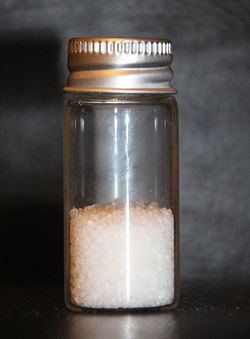
Fishing

PVA is widely used in freshwater sport fishing. Small bags made from PVA are filled with dry or oil based bait and attached to the hook, or the baited hook is placed inside the bag and cast into the water. When the bag lands on the lake or river bottom it dissolves in water, leaving the hook bait surrounded by ground bait, pellets etc. This method helps attract fish to the hook bait.

Anglers also use string made of PVA for the purpose of making temporary attachments. For example, holding a length of line in a coil, that might otherwise tangle while the cast is made.
Preparation
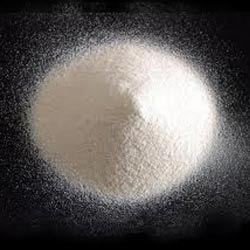
Unlike most vinyl polymers, PVA is not prepared by polymerization of the corresponding monomer. The monomer, vinyl alcohol, is unstable with respect to acetaldehyde. PVA instead is prepared by first polymerizing Vinyl acetate, and the resulting polyvinylacetate is converted to the PVA. Other precursor polymers are sometimes used, with formate, chloroacetate groups instead of acetate. The conversion of the polyesters is usually conducted by base-catalysed transesterification with ethanol:
[CH2CH(OAc)]n + C2H5OH → [CH2CH(OH)]n + C2H5OAcThe properties of the polymer depend on the amount of residual ester groups.
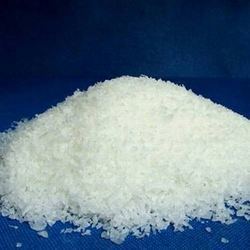
Worldwide consumption of polyvinyl alcohol was over one million metric tons in 2006. Larger producers include Kuraray (Japan and Europe) and Sekisui Specialty Chemicals (USA) but mainland China has installed a number of very large production facilities in the past decade and currently accounts for 45% of world capacity. The North Korean-manufacture fiber Vinalon is produced from polyvinyl alcohol. Despite its inferior properties as a clothing fiber, it is produced for self-sufficiency reasons, because no oil is required to produce it.
Structure and properties
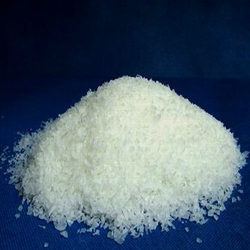
PVA is an atactic material that exhibits crystallinity. In terms of microstructure, it is composed mainly of 1,3-diol linkages [-CH2-CH(OH)-CH2-CH(OH)-] but a few percent of 1,2-diols [-CH2-CH(OH)-CH(OH)-CH2-] occur, depending on the conditions for the polymerization of the vinyl ester precursor.
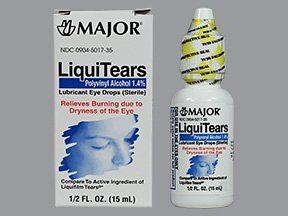
Polyvinyl alcohol has excellent film forming, emulsifying and adhesive properties. It is also resistant to oil, grease and solvents. It has high tensile strength and flexibility, as well as high oxygen and aroma barrier properties. However these properties are dependent on humidity, in other words, with higher humidity more water is absorbed. The water, which acts as a plasticiser, will then reduce its tensile strength, but increase its elongation and tear strength.
PVA has a Melting point of 230 °C and 180–190 °C (356-374 degrees Fahrenheit) for the fully hydrolysed and partially hydrolysed grades, respectively. It decomposes rapidly above 200 °C as it can undergo pyrolysis at high temperatures.
PVA is close to incompressible. The Poisson's ratio is between 0.42 and 0.48.
Tradenames of Polyvinyl Alcohol
Safety
PVA is nontoxic. It biodegrades slowly, and solutions containing up to 5% PVA are nontoxic to fish.
